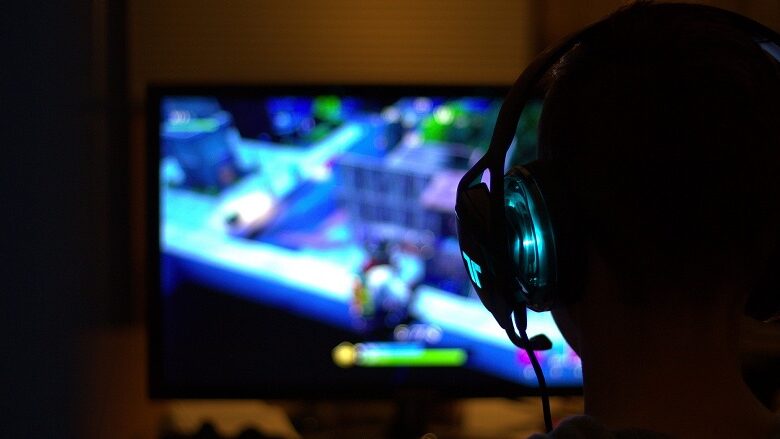
The Last Of Us Part II: accessible game review
SightlessKombat, a gamer without sight who vlogs about his experiences, reviews The Last Of Us Part II, a video game that’s been hailed as the ‘most accessible game ever’.
I am SightlessKombat, an accessibility consultant and gamer without sight. I use the term ‘gamer without sight’ as ‘legal blindness’ is often just shortened to being blind, and this often includes usable and/or residual vision, which I’ve never had.
I’ve been working in the field for around five years, speaking to developers and at events (including remotely), writing reviews, creating YouTube videos and streaming on Twitch, amongst other things.
I was introduced to gaming at a young age after being given the chance to play games on a PC. I initially played mainstream games and then audio-only titles. I didn’t understand how anything worked at that point, but I was bitten by the bug.
My first console gaming experience was on the PlayStation 1. From there, I’ve played numerous games on increasingly more powerful hardware, eventually arriving at where I am now with the Xbox One X and PS4 Pro.
As to why I started gaming though, it has always primarily been for the same reason: to join in with my sighted peers in a pastime that so many take for granted.
Being a gamer without sight
Given my complete lack of vision, any games that do not have menu or UI narration present an already significant challenge.
It means that you often get stuck in tutorial segments or even with setting up the game in the first place. Having to rely on Optical Character Recognition (OCR) or sighted assistance isn’t the ideal solution for various reasons.
For The Last Of Us Part II, however, the only time I needed sighted assistance was to obtain missing collectables. In certain cases, I don’t think I’d have obtained them without sheer luck, at least during my runs to obtain the platinum trophy (prior to the latest patch) – more on this below…
The Last Of Us Part II: what it’s about
The Last Of Us Part II is set in a post-apocalyptic world, five years after the first main entry in the series. The goal of the game, much like the first, is survival.
But the plot takes an even greater leap into the emotional, heavy-hitting storytelling side of things. I’d argue going even further than the first game and its DLC (downloadable content).
You’ll fight your way through hordes of the infected and come up against human foes as well. You can dispatch them through various methods, ranging from sneaky stealth kills to an all-out gunfight. These approaches varying depending, in part, on the enemies around you and what you have available.
I’ve put at least 60 hours into the game, likely more, over the course of at least four full playthroughs, and I have obtained the game’s platinum trophy (for earning all other trophies in the game).
I needed sighted assistance to find the missing collectables from my first run, but that was the only time I enlisted such aid.
With the recent patch (an update) introducing more accessibility improvements – including making it easier to find collectables in some of the side areas – I’d hope that players buying new copies and playing for the first time might be able to find all collectables without any sighted assistance whatsoever.

The Last Of Us Part II accessibility
Even though I have no sight whatsoever, a large number of the game’s accessibility features improved my experience for differing reasons.
This is not an exhaustive list, but I utilise Text To Speech (TTS), which allows me to navigate menus and read tutorial prompts and collectables, including journal entries hidden throughout the game world.
I also use audio cues to allow me to work with certain aspects, such as combat, traversal (travelling through places) and environment interaction.
Additionally, I enable lock-on aiming and traversal assistance, the latter allowing me to press various buttons to make sure I am moving in the correct direction, whether that’s for story progression or to find nearby items.
Whilst not technically an accessibility option (though the categorisation of features as accessibility options is a whole other discussion), I used modifiers in my recently streamed playthrough as well.
It meant that I had infinite ammo and crafting capabilities, which definitely reduced my stress levels at certain points as well, so is something for players to consider.
Here is a video showing highlights of both ranged combat and stealth kills on enemies with commentary.
Whilst these systems and others I work with aren’t necessarily absolutely perfect, they are a definite step in the right direction, with some having been present in other games beforehand as well.
The key difference here is that all of these features are in one self-contained package, a first for any game, at least to my knowledge.
However, although I feel that this game has set the bar for accessibility as a gamer without sight, there are certainly improvements that can be made.
Issues with the pathfinding in some areas, at least on my initial playthroughs, meant that I missed collectables that I was then unable to locate myself, meaning I needed sighted assistance.
The same could be said for certain puzzles, which were very difficult if not impossible to complete without a large element of luck and having a walkthrough to guide anyone assisting me.
Thankfully, with the same update that introduced the grounded difficulty (where you can increase the difficulty of the game), there were references to more easily finding collectables as well.
Therefore, players who had trouble locating everything may now be able to obtain all the various items scattered throughout the world without any sighted assistance.
Unfortunately, though, irrespective of the hard work that’s clearly been done, I think it’ll be another couple of years at least before we see the result of developers learning from this achievement and taking ideas from it into their own projects. I hope to be proven incorrect on that though.
You can see my full video review of The Last Of Us Part II on my YouTube channel.
By SightlessKombat
Visit the SightlessKombat’s YouTube channel to find reviews and tips on a whole host of video games. You can also follow him on Twitch and Twitter @SightlessKombat.
More on Disability Horizons…